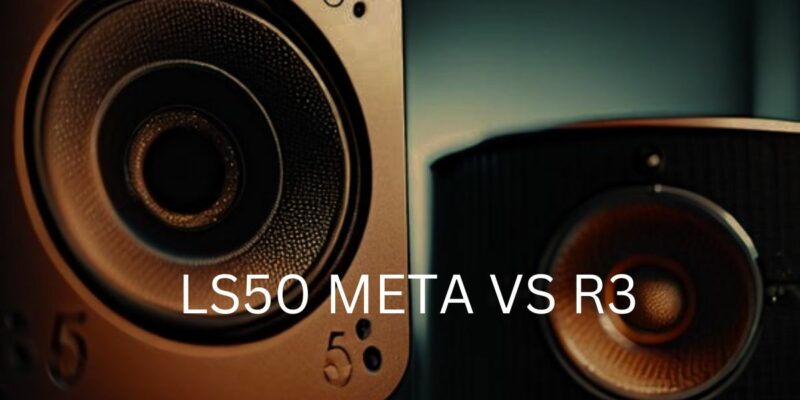In the world of high-fidelity audio, the quest for exceptional sound reproduction is an ongoing pursuit. The market is brimming with options, but two prominent contenders that have garnered significant attention are the KEF LS50 Meta and the KEF R3 speakers. Both hailed as marvels in their own right, it’s time to pit these audio powerhouses against each other and unravel the nuances that set them apart. Join us as we delve into the world of LS50 Meta vs. R3 and explore which one reigns supreme.
Design and Aesthetics
The first aspect that catches the eye when comparing the LS50 Meta and the R3 is their distinct design language. The LS50 Meta exhibits a sleek, futuristic appearance with its curved edges and minimalist approach. On the other hand, the R3 sports a more traditional cabinet design with a refined elegance that complements any interior. Whether you prefer a modern or classic look, both models offer exquisite craftsmanship that caters to diverse tastes.
Acoustic Excellence
When it comes to sound quality, the LS50 Meta and R3 leave no room for compromise. The LS50 Meta incorporates advanced metamaterial technology, which effectively absorbs unwanted sound waves and reduces distortion, resulting in a more accurate and transparent audio experience. Conversely, the R3 boasts a Uni-Q driver array, ensuring exceptional imaging and sound dispersion. It’s a close race, with both speakers delivering outstanding sonic performance, but the LS50 Meta’s metamaterial innovation might give it a slight edge.
Frequency Response and Dynamics
Examining the frequency response and dynamics of the LS50 Meta and R3 sheds light on their audio capabilities across the entire spectrum. The LS50 Meta offers an extended frequency response, capturing subtle details in the high and low ends with precision. Meanwhile, the R3 delivers a powerful and dynamic soundstage, rendering impactful bass and impressive midrange clarity. Choosing between them depends on personal preferences, with the LS50 Meta excelling in detail retrieval and the R3 captivating with its engaging dynamics.
Room Adaptation
Optimizing sound reproduction for a specific listening environment is crucial, and both the LS50 Meta and R3 cater to this need. The LS50 Meta incorporates KEF’s patented Music Integrity Engine, which analyzes the room’s characteristics and tailors the sound accordingly. The R3, on the other hand, allows for bi-wiring and bi-amping configurations, granting users greater flexibility to fine-tune their audio setup. This adaptability factor makes both speakers versatile choices, ensuring remarkable performance regardless of room constraints.
Price and Value
While both speakers represent the epitome of audio excellence, their price points differ. The LS50 Meta, being a flagship model, commands a premium price tag. However, its innovative technology and exceptional performance make it a worthwhile investment for audiophiles seeking uncompromising quality. On the other hand, the R3 offers a more accessible entry point without compromising on sound quality, making it an enticing option for those looking for a stellar audio experience without breaking the bank.
In the clash between the KEF LS50 Meta and the KEF R3, there are no clear winners or losers. Both speakers excel in different areas, catering to distinct preferences and budgets. The LS50 Meta’s metamaterial technology delivers an unparalleled level of accuracy, while the R3 captivates with its powerful dynamics. Ultimately, the decision rests on the individual’s sonic inclinations and desired aesthetic. Whichever speaker you choose, rest assured that you’ll be indulging in an audio journey that pushes the boundaries of sonic reproduction.

